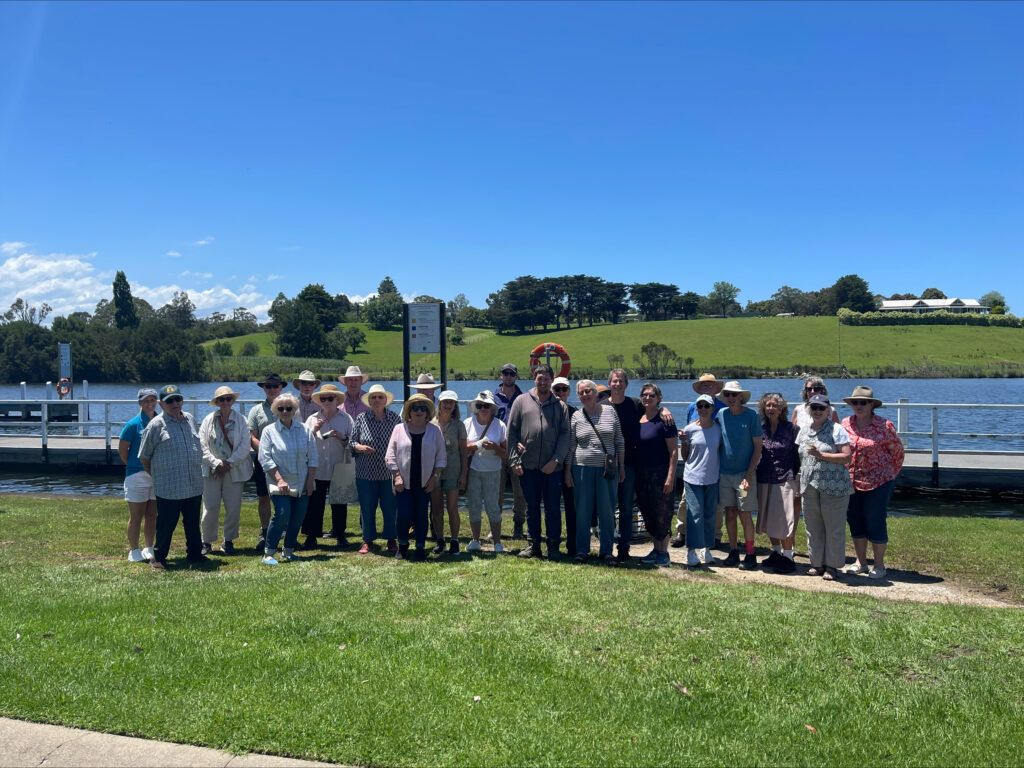Students across East Gippsland have been given the opportunity to learn all about natural resource management with the help of wildlife and art.
The East Gippsland Catchment Management Authority (CMA) once again visited schools along with Black Snake Productions and their native animals on a roadshow of biodiversity and waterway health presentations, titled Catchment Connections with a focus this year on threatened species.
Students learnt about the work that the East Gippsland CMA, along with its partners, other environmental organisations, and volunteer groups, do to improve the health of our catchments.
This year the East Gippsland CMA teamed up with the East Gippsland Art Gallery. Students were guided by the Art Gallery in an art class to decorate and learn about threatened species. The students will have the opportunity to showcase their artwork at an event in September to acknowledge Threatened Species Day.
Multiple volunteers helped prepare for these presentations, including the Bairnsdale Men’s Shed, who made the wooden stakes on which students’ art will be displayed. Volunteers also chipped in to prepare the wooden animal cutouts for decorating.
The East Gippsland Landcare Network’s seedbank supplied seeds for the students to grow, with seed species selected to support the habitat of the threatened species that the students decorated. The seeds from the seedbank are sourced by volunteers across the region. These seeds enable revegetation of areas with indigenous species that are adapted to the region and found locally.
“East Gippsland CMA are always keen to help schools, and their students gain a deeper understanding of the environment and in this case the vital role of healthy habitats for threatened species,” said Bec, East Gippsland CMA’s CEO.
Incorporating interactive encounters with wildlife and a hands-on art class, this program aims to instil an understanding of our catchment’s important biodiversity while keeping the learning experience engaging and fun for students.
As part of its commitment to protecting and restoring Victoria’s waterways and catchments, this project is funded by the Victorian Government.

With support from the local community, bank stabilisation works near the Wonnangatta River are nearing completion.
This work will help address the potential for the Wonnangatta River to change course and help protect the riverbanks and surrounding environment.
The East Gippsland Catchment Management Authority (CMA) has been able to undertake multiple facets of work to strengthen the site which had eroded following high flow events in recent times with the help of the Victorian Government’s recovery funding from the Summer 2023-2024 storm and flood event.
“This project has been a joint effort with engineers developing an optimal design to effectively mitigate the erosion issue. Local contractors have been quick to install the pile fields and rock in ready for Gunaikurnai Land and Waters Aboriginal Corporation (GLaWAC) to complete the project with the planting of native vegetation,” said CEO of East Gippsland CMA Bec Hemming.
Pile fields were installed to slow the flow of water. Rock has been placed around the site to assist with stabilisation and strengthening the area, to prevent further erosion and reduce the likelihood of the river changing course. These works will be complemented by revegetation to provide additional and ongoing stability.
“The success of this project has been enhanced by the ongoing collaboration with the local landholder. Their active involvement has been invaluable ensuring the stabilisation efforts are both effective and sustainable. The partnership has allowed the East Gippsland CMA to address the erosion issues, combining local knowledge with technical expertise to preserve the river’s environment,” added Bec.
This project reflects the continuous efforts and partnerships with agencies and community members in maintaining and protecting priority waterways now and into the future. It is funded as part of the Victorian Government’s investment into improving the health of waterways and catchments in regional Victoria.
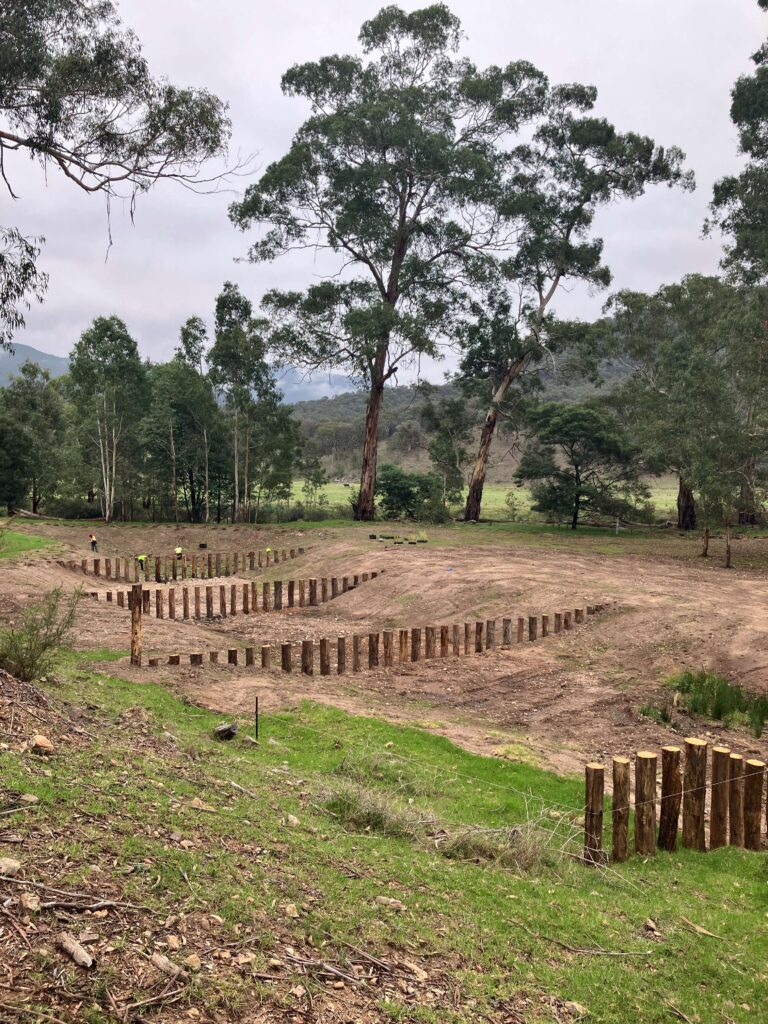
A project dedicated to enhancing the habitats of the Eastern Hooded Plover and Australian Fairy Tern through sand renourishment efforts has received a boost.
This project is funded by the Australian Government Natural Heritage Trust and delivered by Gippsland Ports, BirdLife Australia and the East Gippsland Catchment Management Authority, a member of the Commonwealth Regional Delivery Partners panel.
There have been major declines to populations of Eastern Hooded Plovers, Fairy and Little Terns across Australia due to predation from introduced species, loss of habitat and human activities. Breeding colonies are becoming rarer, and many traditional nesting sites have been abandoned.
“Sand dredged by Gippsland Ports has been used to create critical breeding and feeding habitats across several locations in the Gippsland Lakes, restoring a further four hectares of vital habitat.” Said Bec Hemming, CEO of East Gippsland Catchment Management Authority.
“In addition to sand renourishment, the project will protect fringing wetlands and saltmarsh habitats surrounding the Gippsland Lakes by installing fencing to restrict stock and human access.” said Bec
The project will include the monitoring of key ecological health indicators of the Gippsland Lakes with the installation of water quality gauges and conducting surveys of migratory birds, frogs, saltmarsh, and seagrass. The data collected will inform management actions for the Gippsland Lakes throughout this project and into the future.
“Bird surveys are a big part of this project, and with over 20 years of data already captured, these efforts will continue. Sightings of terns already using the renourished area is a very encouraging early sign of the project’s success,” added Bec.
Agency staff and volunteers will be out and about recording sightings to make sure the area stays safe for nesting birds. This data will help guide future management actions, keeping the Gippsland Lakes healthy and sustainable into the future.
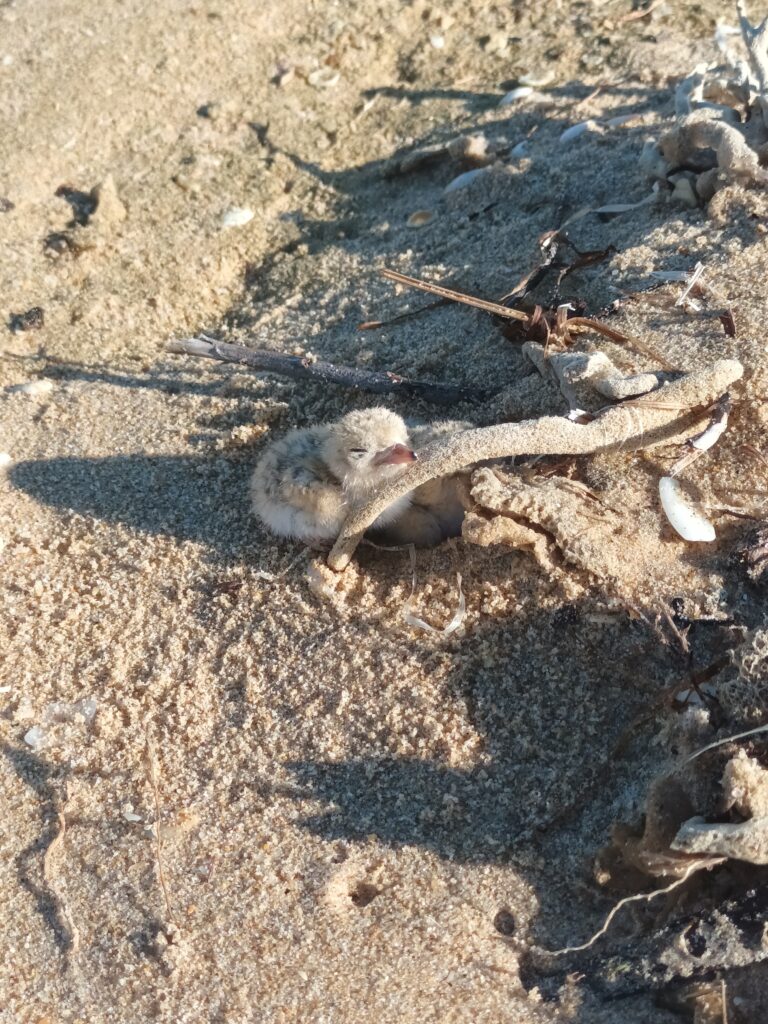
Lucknow Primary School students spent a day at Macleod Morass identifying bugs, bird watching and water monitoring.
The East Gippsland Catchment Management Authority (CMA) and Wildlife Unlimited helped the grade five and six students in their outdoor activity to support their science and environmental studies.
The students explored the rich biodiversity of the morass and learnt about the importance of it being an internationally significant Ramsar wetland. They were given an overview of the programs undertaken to ensure its conservation, including the wastewater treatment plant and constructed wetlands.
“East Gippsland CMA are always keen to help schools, and their students gain a deeper understanding of the environment and in this case the vital role wetlands play,” said Bec, East Gippsland CMA’s CEO.
With a new understanding of this important wetland, the students broke into groups to get stuck into some hands-on activities.
The water monitoring involved looking at salinity, pH, dissolved oxygen and turbidity which are important water quality parameters in the health of the wetlands.
The students examined under a microscope some of the millions of bugs and critters that are found at the morass, which form part of the food chain for fish, birds, reptiles, and mammals.
The students eagerly donned binoculars and, with bird books in hand, set out to identify as many birds as possible. They quickly spotted a flock of Ibis and eagerly flipped through the pages to name the Purple Swamphens, Black Ducks and Welcome Swallows they had seen. The sight of a Spoonbill feeding in the shallows was an added delight.
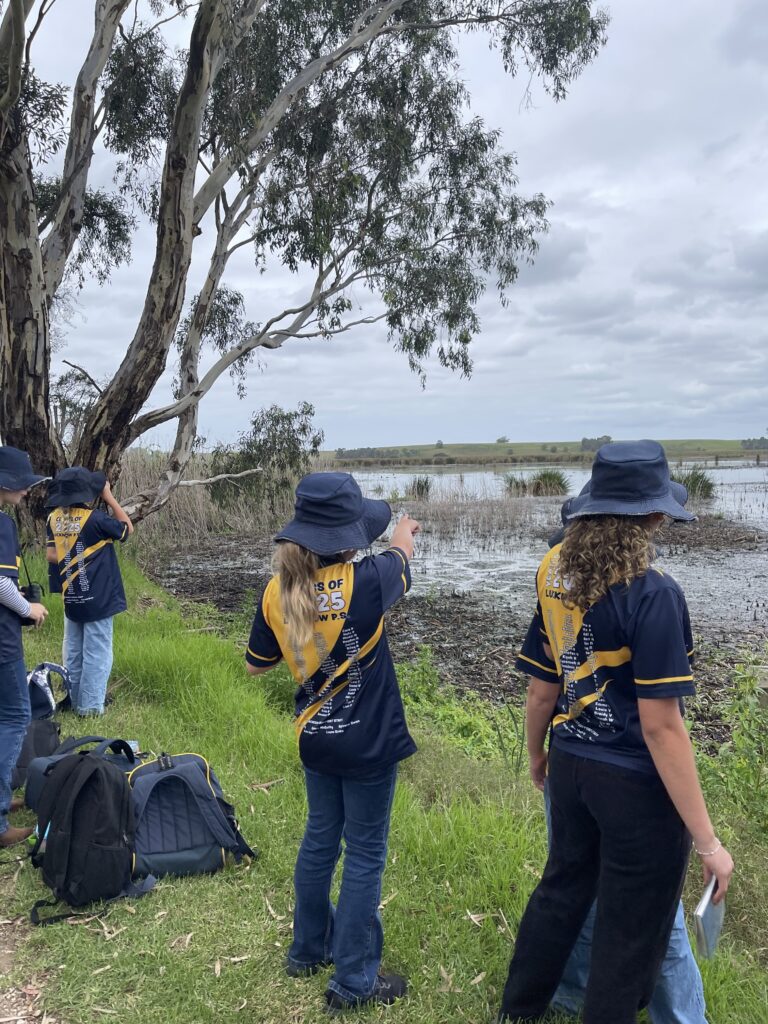
A conservation project is aiming to enhance the connectivity and health of important ecosystems across the Gippsland Red Gum Plains.
This project is funded by the Australian Government Natural Heritage Trust and delivered by the East Gippsland Catchment Management Authority, a member of the Commonwealth Regional Delivery Partners panel.
The project focuses on the Gippsland Red Gum Grassy Woodland and Seasonal Herbaceous Wetlands Threatened Ecological Communities, which exist across private and public land. The Redgum Grassy Woodlands and the Seasonal herbaceous wetlands provide important habitats for a variety of rare and threatened flora and fauna.
The Moormurng and Bengworden Reserves, the key focus areas of the project, are home to some of the largest remaining patches of these ecosystems. The project has been shaped through extensive consultation with partners who will also assist in undertaking work including Gunaikurnai, community groups, non-Government organisations, and land management agencies.
Endangered under the EPBC Act (Environment Protection and Biodiversity Conservation Act 1999), the Dwarf Kerrawang will benefit from the conservation work as the focus of the project is on existing remnant patches of the woodlands and wetlands, where this species is found. Works will include habitat condition surveys, restoration activities and targeted interventions to address specific threats to biodiversity.
The project will address major threats including invasive weed species control, covenanting private land with the assistance of landholders, revegetation including direct seeding and supplementary planting, and fire management activities. All efforts are in line with the latest conservation advice for Threatened Ecological Communities.
“This is a fantastic opportunity to make a real difference to these areas,” said Bec Hemming, CEO of the East Gippsland Catchment Management Authority. “By joining forces, we can protect and rejuvenate these unique landscapes.”
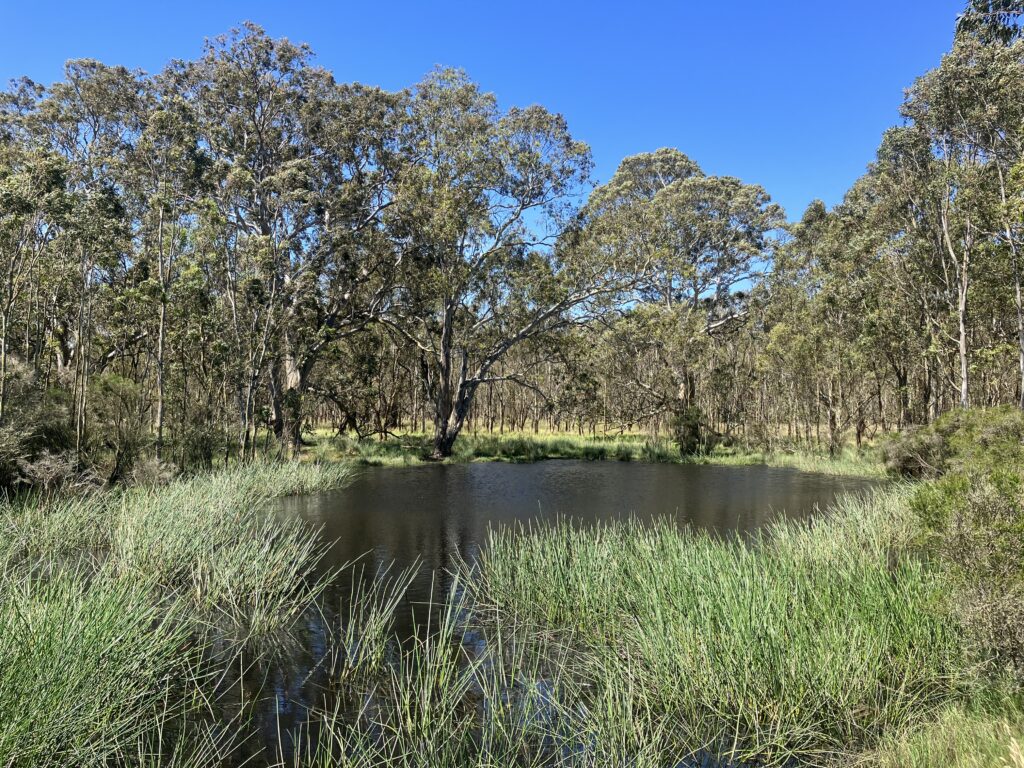
Funding continues for a role that helps the agricultural community in East Gippsland adopt sustainable farming practices.
Sustainable Agriculture Facilitators (SAFs) are based in rural regions across Victoria.
In East Gippsland, Emma Orgill, based in Orbost, is the go-to contact for farmers, landholders, industry and community groups, supporting climate-smart agriculture in this region.
The SAF’s role is to offer services that create partnerships and connections, promoting knowledge and adoption of sustainable agriculture practices across the East Gippsland agricultural community. The SAF supports the implementation of management tools, ensuring a more sustainable and resilient farming sector.
Emma has gained extensive experience from her time in this role, developing strong connections with East Gippsland’s farming community and agency partners. She has supported numerous activities across the region, including field trips, training sessions and workshops.
“I’ve enjoyed working in this role for all these years and value how the agriculture community works together.” Said Emma Orgill
“Farmers are amazing people that need to wear many hats from operating a business to looking after their land, people, and animals. I’ve not met a farmer that doesn’t want to leave their property in a better place for the next generation while committing to create a resilient farming community.” Added Emma
The East Gippsland Sustainable Agriculture Facilitators are supported by the Australian Government through funding from the Natural Heritage Trust under the Climate-Smart Agriculture Program.
Keep an eye out for upcoming dates of events via the East Gippsland Catchment Management Authority and Far East Victoria Landcare’s social media pages.
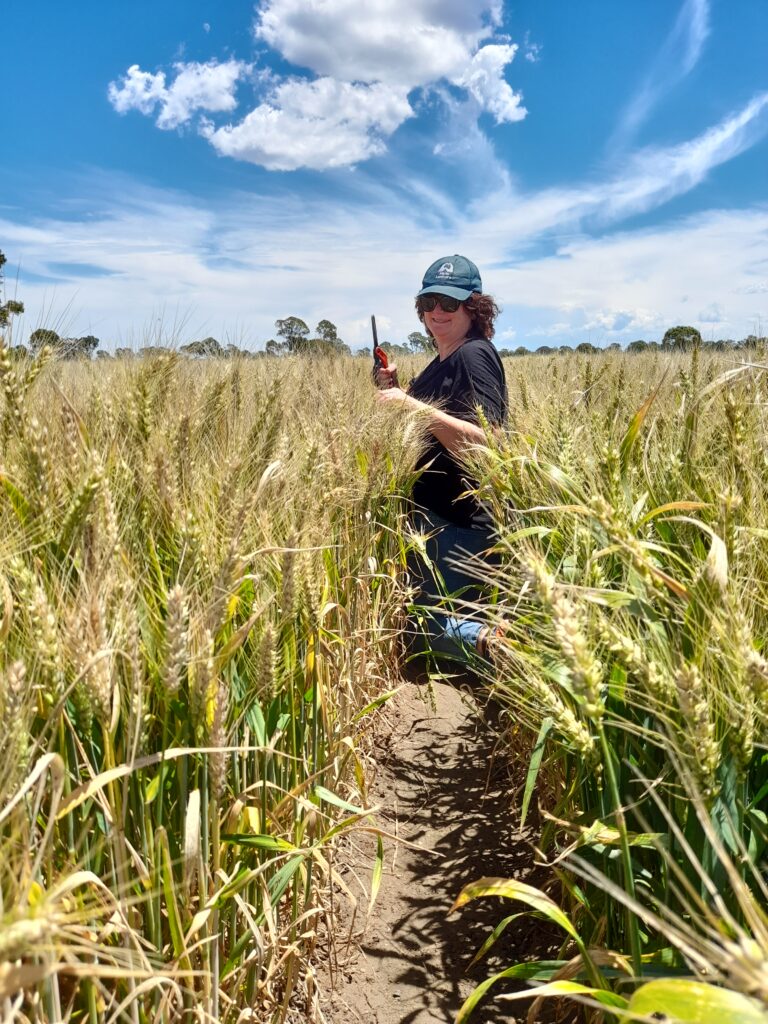
Lake Tyers Estuary opened to the sea in the early hours of Tuesday 18 February 2025.
Since the opening there have been no reports of fish deaths. There are reports of many birds and ducks in the area, and the lake is very clear.
On Tuesday afternoon (of the opening) the East Gippsland Catchment Management Authority (CMA), with support from Parks Victoria carried out water quality monitoring across the lake. The oxygen levels at Toorloo Arm were extremely low (2% at surface) and were also low in Boggy Creek (40%). All other sites across the lake had moderate to high oxygen levels.
The East Gippsland CMA were concerned by these results and were keeping a close eye on the lake, asking people to contact them if fish were looking to be impacted.
Bec Hemming, CEO East Gippsland CMA said, “on Wednesday afternoon, East Gippsland Shire Council and East Gippsland CMA staff saw a couple hundred of small fish had gone belly up near the Nowa Nowa wetlands walk.”
“We were starting to think that this was the start of more bad news to come.”
On Thursday afternoon further inspections were undertaken in Toorloo Arm and no dead fish were found.
“We were relieved with this news. There isn’t a lot of science on fish movement during estuary openings. We suspect they move downstream towards the ocean, and where there is more oxygen,” said Bec.
“The lake is looking great, the water is clear, there are lots of waterbirds enjoying the changes in conditions and we are hearing reports that the fishing is a little hit and miss.”
“It is great to see the agencies working together. East Gippsland Shire Council have done a power of work to clean up the facilities at Nowa Nowa and Lake Tyers Beach; the community have kept everyone up to date with the changes in the lake and providing reports to agencies. Parks Victoria and Gippsland Ports have provided ongoing support with monitoring conditions and intelligence. We thank everyone for their contributions and hope the conditions in the lake continue to improve”.
“We continue to learn from each estuary opening, as every estuary system and opening is different,” added Bec.
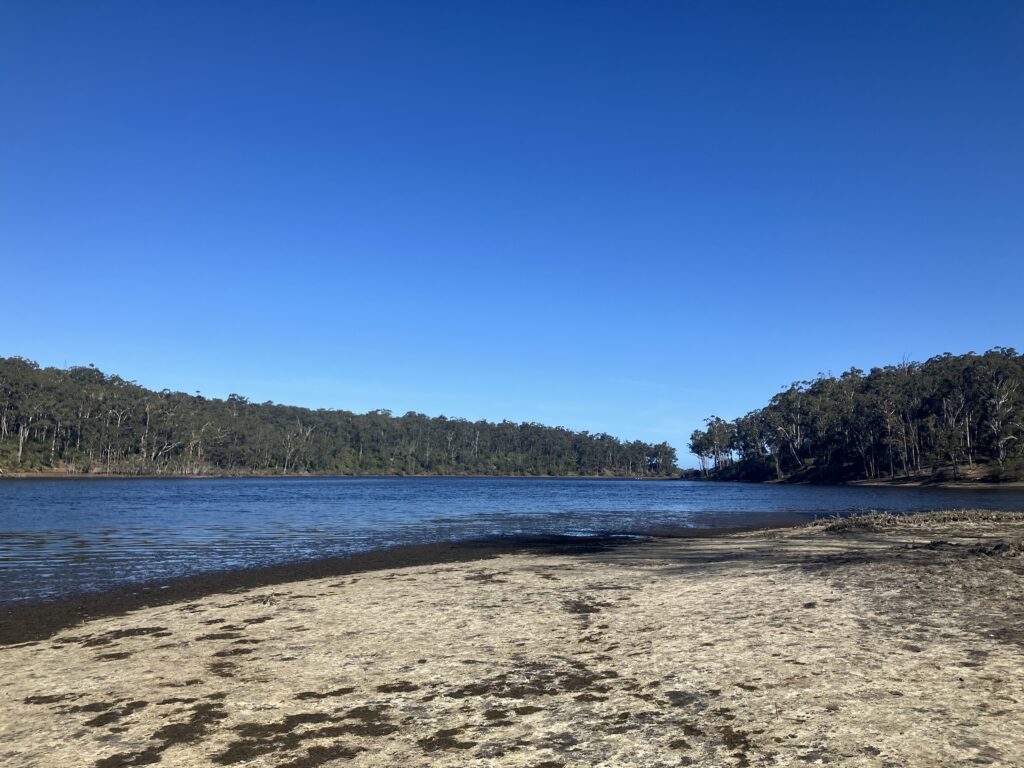
An exciting initiative is underway to protect threatened ecological communities addressing the various threats they face.
The South East Coastal Ranges describes an area of critical biodiversity importance found in the South-East corner of Australia, it spans from Batemans Bay in New South Wales into eastern Victoria along the coast and encompasses most of East Gippsland.
This region boasts diverse and complex natural habitats, from temperate rainforests and woodlands to wetlands and coastal vegetation. This diversity in habitat supports over 140 threatened bird, frogs, reptile and plant species.
This project aims to reduce impacts on rare and threatened ecosystems found across this region, particularly following the Black Summer Bushfires. This will be achieved through conducting landscape scale pest plant and animal control.
This project was designed collaboratively with agency partners, Traditional Owners and First Nations People, and landholders to improve the condition of these ecosystems over a large area. This will involve collaboration with landholders to protect and restore existing areas containing rare and threatened species.
A key component of this initiative is enhancing land managers’ understanding of the importance of increasing the size, quality, and connectivity of small, isolated patches of threatened native vegetation in our region.
A vital part of this project includes locating and producing accurate mapping of the River Flat Eucalypt Forest Threatened Ecological Community in Victoria. This critically endangered ecological community is found across southern New South Wales and eastern Victoria and features tall eucalypt trees found in floodplains and along waterways.
These forests support a diverse range of plant and animal life but face threats from fire, invasive species, and changes to water flow. This project is funded by the Australian Government under Saving Native Species and delivered by East Gippsland CMA as member of the Commonwealth Regional Delivery Partners panel.
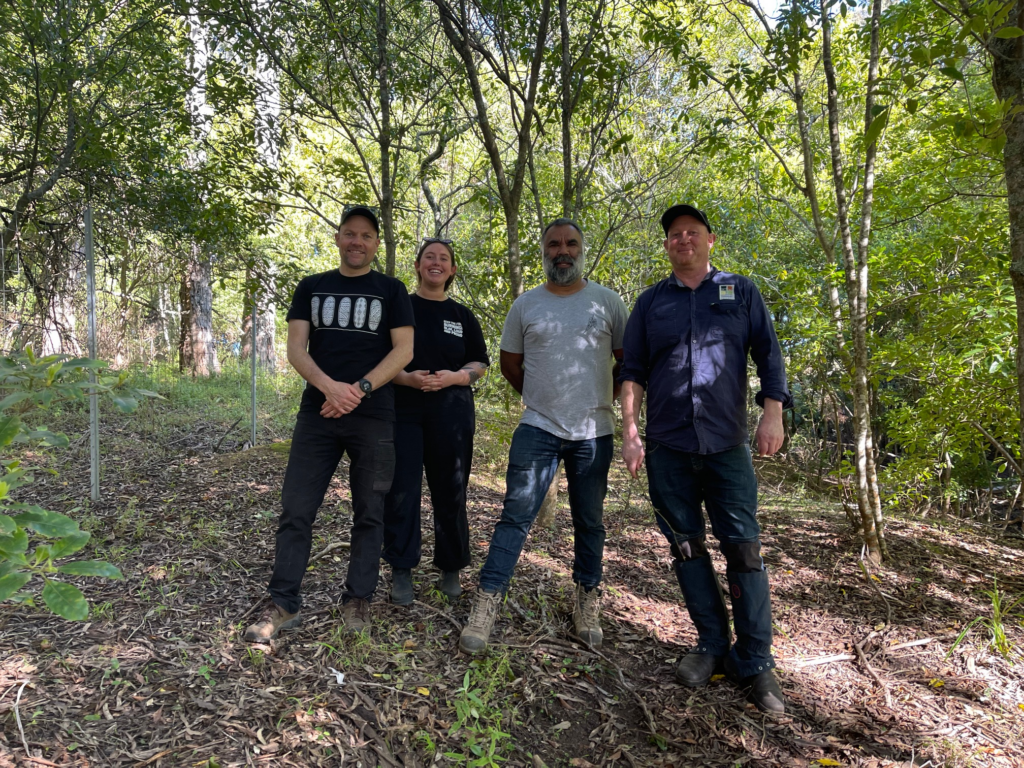
December 2024
Beach nesting Little Terns have returned to breed on beaches of East Gippsland.
Little Terns, along with Fairy Terns, are a threatened species that migrate to the Gippsland Lakes Ramsar site each year to breed, however they often fail to successfully rear their chicks due to the disturbance of breeding sites.
Terns are a small seabird found in coastal and estuarine environments of Australia. They travel long distances to nest, flying in from northern Australia and some further afield.
There have been major declines to populations of Fairy and Little Terns across Australia due to predation from introduced species, loss of habitat and human activities. Breeding colonies are becoming rarer, and many traditional nesting sites have been abandoned.
“One of the biggest threats to these birds is disturbance at breeding sites by human activity, including dogs off-leash.” said Bec Hemming, CEO of the East Gippsland Catchment Management Authority.
“Nest sites are regularly monitored by BirdLife Australia and volunteers and exclusion area signs installed, but it is vital that the community and visitors do all they can to ensure these species not only survive but thrive and continue to be an important visitor to the Gippsland Lakes,” added Bec.
Deb Sullivan BirdLife Australia’s East Gippsland Conservation Coordinator said “as tempting as it might be to have a closer look at a colony every disturbance is harmful to the eggs, chicks and the well-being of the adults. Adults need to preserve all their energy to successfully forage for food to raise their chicks. Every time they are disturbed and fly off, they lose valuable energy.”
“Not only that, by disturbing the adults it provides an opportunity for scavenging predators such as Silver Gulls and Ravens to swoop in and steal the unattended eggs and chicks. We strongly recommend that people don’t approach the colony for the welfare of the birds”
If you live near or are visiting the Gippsland Lakes this holiday season there are two simple things you can do to help this species survive and breed successfully including:
- reading and observing beach signage
- avoiding cordoned off areas including not allowing dogs run around off leash
“The time it takes a baby tern to hatch, fledge and be ready to fly away to live as an adult is only a few weeks, so we hope that people take note of the signage and stay away, giving the birds the very best chance possible to survive, securing their existence into the future.” “As a community, we should be proud to still have the opportunity to protect these beautiful birds while they visit our region because one day they might not return,” added Deb.

The tranquillity of the Nicholson River was enhanced by the enthusiastic spirit of Landcare volunteers from across the region. On a very warm but perfect day for boating, volunteers enjoyed a leisurely tour along the river hosted by the East Gippsland Catchment Management Authority (CMA).
People travelled from local areas, the Far East, and our neighbouring West Gippsland, coming together to share insights on their ongoing projects and emphasising the importance of community engagement in environmental conservation.
Whilst some enjoyed the sights from the water, others ventured along the walkways of the Nicholson River. Guided by local Nicholson Landcare members Marion and Gary Dawson, they showcased the remarkable work accomplished over the years. The group has partnered with Nicholson Primary School, dedicating hours to planting native trees, restoring habitats, and creating inviting walking tracks and rest areas.
Maintaining the area is not easy, and with only a handful of volunteers, they have their work cut out for them. The walking trails that the group regularly maintains are extremely popular, benefiting many. Their dedication has not only enhanced the local environment but also contributed to river health, benefiting the wider community and the catchment as a whole.
“We are incredibly proud of the Landcare Groups in East Gippsland and the partnerships they have built with local primary schools, other community groups, Traditional Owners and other government agencies” said Bec Hemming, CEO of the East Gippsland CMA. “Together, they’ve not only made a tangible impact on their local area they have also inspired the next generation to take an active role in conservation.”
Volunteering is a great way to meet new people, get involved and give back to community and the environment. The Nicholson Landcare group recently held a volunteer drive, hoping to recruit more volunteers. All Landcare groups would welcome new volunteers. To get in contact with your local Landcare group, contact the East Gippsland CMA. The day’s activities concluded with a heartfelt thank you to all volunteers and community members who have contributed to the success of Landcare initiatives. This day out on the river was a testament to what can be achieved when a community comes together with a shared vision and desire to protect our waterways.
